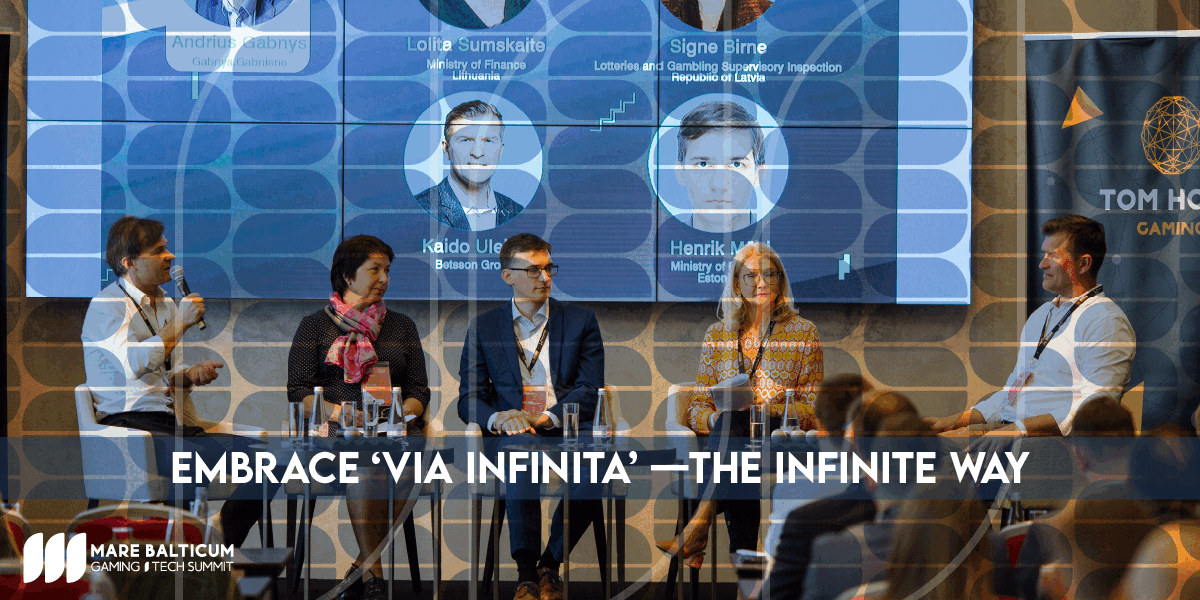Fintech
Green Light Metals Acquires the Kalium Canyon Project in the Walker Lane District of Nevada from Orogen Royalties
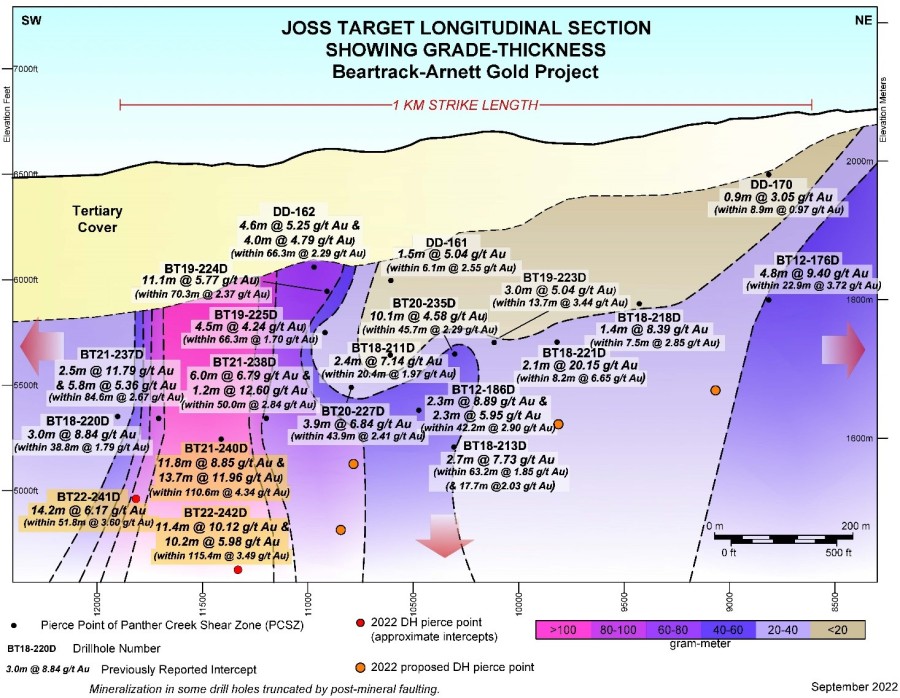
Medford, Wisconsin–(Newsfile Corp. – September 26, 2022) – Green Light Metals Inc. (“Green Light” or the “Company“) is pleased to announce that on September 21, 2022 Green Light’s wholly-owned subsidiary Green Light Wisconsin LLC (the “Purchaser“) acquired a 100% interest in the Kalium Canyon Project in the Walker Lane district of Nevada from Renaissance Exploration Inc., a wholly-owned subsidiary of Orogen Royalties Inc. (collectively, “Orogen“) (the “Transaction“). Orogen will receive C$30,000 in cash, 1,000,000 common shares of the Company, and a net smelter return (“NSR“) royalty of up to 3%, of which 1% can be purchased for US$2 million. The Kalium Canyon Project was previously subject to an option agreement dated June 21, 2021, between Orogen and the Company’s wholly-owned subsidiary Badger Minerals LLC (the “Option Agreement“).
“As evidenced by past surface investigations and exploration drilling, the Kalium Canyon Project has the potential to host epithermal mineralization similar to many other gold discoveries in the Walker Lane,” commented Green Light President & CEO Dan Colton. “We are pleased to acquire a 100% interest in the project, providing Green Light with maximum flexibility to advance Kalium Canyon and unlock its value for our shareholders.”
About the Kalium Canyon Project
- The Kalium Canyon Project covers 135 unpatented lode mining claims in the Walker Lane district of Nevada where many low sulfidation epithermal gold discoveries in Nevada have been found, including North Bullfrog, C-Horst/Lynnda Strip, Silicon, Eastside, and Goldfield. Locally, the project lies within the Red Mountain district.
- The Kalium Canyon Project comprises the Argenta prospect and the Kalium Canyon prospect (see Figure 1). A block of 80 “Kalium” claims cover the prospective mineralization system at the Kalium Canyon prospect. To the east, the “Marty” claims that comprise the Argenta prospect were acquired by Orogen from Bridgeport Gold Inc. in June 2021. In December 2021, the Purchaser staked the “GLM” claim block adjoining the east boundary of the Marty claims. These newly staked claims cover the eastern extension of the Argenta prospect. The property covers a total of approximately 2,758 acres (1,117 ha).
- The undrilled Kalium Canyon prospect is characterized by a 1-2 km long zone of alunite-kaolinite alteration interpreted to be a steam-heated cell. Similar argillic alteration and associated siliceous sinters are found overlying epithermal gold mineralization at the Argenta prospect. Siliceous sinters provide evidence of underlying hydrothermal fluid flow and are an important exploration tool when searching for low-sulfidation epithermal gold mineralization.
- The character of mineralization at the Argenta prospect is best exemplified by the main mineralized zone historically targeted by exploration, defined initially by Camnor Resources Ltd. in the late 1990s, called the Adit Zone. The Adit Zone refers to an extensive zone of gold bearing quartz veining, breccia and stockwork located in the footwall of a southward dipping, east-northeast trending fault. The host lithology is a variably silicified and argillically altered latite porphyry. Mapping has traced the Adit Zone for 2,000 feet (610 m).
- In 1947, an 80-foot (24 m) adit was completed that tested a part of the Adit Zone. The adit exposes several parallel quartz veins throughout the zone. Continuous chip sampling of a 167-foot (50.9 m) section of the adit is reported to have returned an average of 1.97 gpt gold. Rock chip samples of the silicified zone exposed in the adit were reported by Camnor Resources to return a value of 3.74 gpt gold across 50 feet (15.2 m).
- Drilling shows the Adit Zone to be composed of at least two, possibly three, distinct mineralized structures composed of quartz veining and stockwork. The grade of each of these structures and of the Adit Zone itself varies considerably along strike and down-dip. The best intersections occur in the vicinity of the historic adit and include a 270-foot (82.3 m) section averaging 0.86 gpt gold.
- The historic exploration results indicate that potentially economic gold grades are found over lengths that warrant further exploration for both bulk-tonnage and high-grade precious metal deposits. Furthermore, geologic indicators interpreted to vector toward buried epithermal deposits are present at the Argenta prospect and reported at the Kalium Canyon prospect area. These indicators include host rock alteration and paleosurface features, such as siliceous sinters, commonly interpreted to overlie hydrothermal systems related to epithermal precious metal deposits.
- The Company has filed on www.sedar.com a technical report titled “Kalium Canyon, Goldfield Quadrangle, Esmeralda County, Nevada, United States of America” with an effective date of January 12, 2022 (the “Kalium Canyon Property Technical Report“). The Kalium Canyon Property Technical Report was prepared by Peter Bittenbender, a “qualified person” as such term is defined in NI 43-101.
Figure 1 – Mineralized structures near Kalium Canyon. Geology from Stewart et al (1974)
To view an enhanced version of this graphic, please visit:
https://images.newsfilecorp.com/files/7506/138290_351fd5c8442dda0d_001full.jpg
Transaction Highlights
- Pursuant to a Property Purchase Agreement dated September 14, 2022 between Badger Minerals LLC, the Purchaser, the Company, and Orogen (the “PSA“), the Purchaser has acquired the Kalium Canyon Project for C$30,000 in cash and the issuance of 1,000,000 Company common shares.
- In the event the Company is not listed on a Recognized Canadian Exchange, as such term is defined in the PSA, by September 21, 2024, the Purchaser shall pay Orogen an additional C$100,000 in cash.
- The Company will also issue Orogen additional Green Light common shares should the Listing Price, as such term is defined in the PSA, on a Recognized Canadian Exchange be less than $0.40 per Green Light common share.
- The Option Agreement has been terminated, eliminating all future work commitments as well as significant future option payments totaling US$1,725,000.
- Pursuant to a Net Smelter Returns Royalty Agreement between the Purchaser and Orogen dated September 21, 2022, the Purchaser has granted to Orogen up to a 3% NSR (the “Royalty“) on the Kalium Canyon Property. In the case of claims with an existing underlying royalty, the Royalty payable to Orogen will be reduced such that the total royalty on any claim shall not exceed 3%. In the event the Purchaser acquires additional claims within a 1-kilometer wide radius surrounding the perimeter of certain existing Kalium Canyon Project claims (the Kalium and Marty claims as shown in Figure 1), Orogen shall be granted a 3% NSR Royalty on these claims.
- The Purchaser has the right to purchase one-third of the Royalty (i.e., an undivided 1% of Net Smelter Returns) at any time by making a cash payment of US$2,000,000.
- Within 60 days following the Commencement of Commercial Production, the Purchaser will pay Orogen a one-time payment of US$5.00 per ounce of Gold Equivalent, on ounces of Gold Equivalent contained in 8 of the 135 claims (for which, as a result of underlying royalties, the Royalty to Orogen is 0%) based on the NI 43-101 mineral reserve and mineral resource estimates set out in the then current feasibility study relating to the Kalium Canyon property, provided that this production payment shall be capped at a maximum of US$5,000,000.
- The Purchaser and Orogen will work together to finalize certain post-closing matters in the coming weeks.
Qualified Person Statement
All technical data, as disclosed in this press release, has been verified by Peter Bittenbender, a “qualified person” as defined under the terms of National Instrument 43-101.
ABOUT GREEN LIGHT
Green Light’s mission is to expand known mineral resources and make new discoveries on one of North America’s most prolific yet underexplored volcanogenic massive sulfide (“VMS“) greenstone belts – the Penokean Volcanic Belt (the “Belt“) in Wisconsin, USA. The Belt’s deposits are rich in the clean energy metals copper and zinc, as well as gold, that are required to power the imminent green, low carbon economy. The Company’s strategy is to capitalize on its first mover advantage to consolidate, secure, and drill dominant land positions.
Green Light is committed to operating in a responsible and sustainable manner that benefits our local communities, bolsters national security, and assists in building and securing crucial US supply chains, all while protecting the environment. The Company has established an Environment, Sustainability, and Communities Committee and is fully committed to transparency, accountability, environmental stewardship, safety and community engagement.
The Company’s key assets on the Belt are the Reef gold-copper and Bend copper-gold properties, each of which contains known historical resources with the potential for expansion. In addition, with the closing of the amalgamation with Can-America Minerals Inc. on July 25, 2022, the Company now controls two additional prospective properties in Wisconsin – Lobo and Black. Outside of Wisconsin, the Company now owns 100% of the Kalium Canyon property, an exciting epithermal gold prospect located in the Walker Lane district of Nevada.
For more information, please contact:
Green Light Metals Inc.
Dan Colton
President & CEO, Director
(612) 839-8286
[email protected]
David Carew
CFO & Corporate Secretary
(416) 786-4867
[email protected]
Forward-Looking Information
Certain statements contained in this news release constitute forward-looking information. These statements relate to future events or future performance. The use of any of the words “intend”, “may”, “will”, “expect”, and similar expressions and statements relating to matters that are not historical facts are intended to identify forward-looking information and are based on the Company’s current beliefs or assumptions as to the outcome and timing of such future events. Readers are cautioned to not place undue reliance on forward-looking information. Actual future results may differ materially. Various assumptions or factors are typically applied in drawing conclusions or making the forecasts or projections set out in forward-looking information. Those assumptions and factors are based on information currently available to the Company. The material facts and assumptions include the potential of the Kalium Canyon Project and the ability to list on a Recognized Canadian Exchanged at the Listing Price on the timelines outlined in the PSA and risk factors including, but not limited to , business and economic conditions in the mining industry generally; changes in commodity prices; changes in interest and currency exchange rates; risks relating to inaccurate geological and engineering assumptions; risks relating to unanticipated operational difficulties; risks relating to adverse weather conditions; political risk and social unrest; changes in general economic conditions or conditions in the financial markets; changes in laws (including regulations respecting mining concessions); risks related to the direct and indirect impact of COVID-19 including, but not limited to, its impact on general economic conditions, the ability to obtain financing as required, and causing potential delays to exploration activities; and other risk factors as detailed from time to time. The Company cautions the reader that the above list of risk factors is not exhaustive. The forward-looking information contained in this release is made as of the date hereof and the Company is not obligated to update or revise any forward-looking information, whether as a result of new information, future events or otherwise, except as required by applicable securities laws. Due to the risks, uncertainties and assumptions contained herein, investors should not place undue reliance on forward- looking information. The foregoing statements expressly qualify any forward-looking information contained herein.
To view the source version of this press release, please visit https://www.newsfilecorp.com/release/138290
Fintech
How to identify authenticity in crypto influencer channels

Modern brands stake on influencer marketing, with 76% of users making a purchase after seeing a product on social media.The cryptocurrency industry is no exception to this trend. However, promoting crypto products through influencer marketing can be particularly challenging. Crypto influencers pose a significant risk to a brand’s reputation and ROI due to rampant scams. Approximately 80% of channels provide fake statistics, including followers counts and engagement metrics. Additionally, this niche is characterized by high CPMs, which can increase the risk of financial loss for brands.
In this article Nadia Bubennnikova, Head of agency Famesters, will explore the most important things to look for in crypto channels to find the perfect match for influencer marketing collaborations.
-
Comments
There are several levels related to this point.
LEVEL 1
Analyze approximately 10 of the channel’s latest videos, looking through the comments to ensure they are not purchased from dubious sources. For example, such comments as “Yes sir, great video!”; “Thanks!”; “Love you man!”; “Quality content”, and others most certainly are bot-generated and should be avoided.
Just to compare:
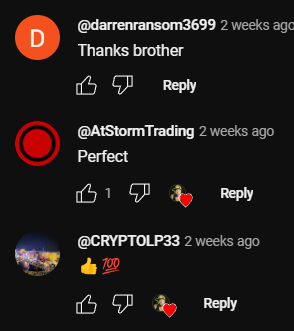
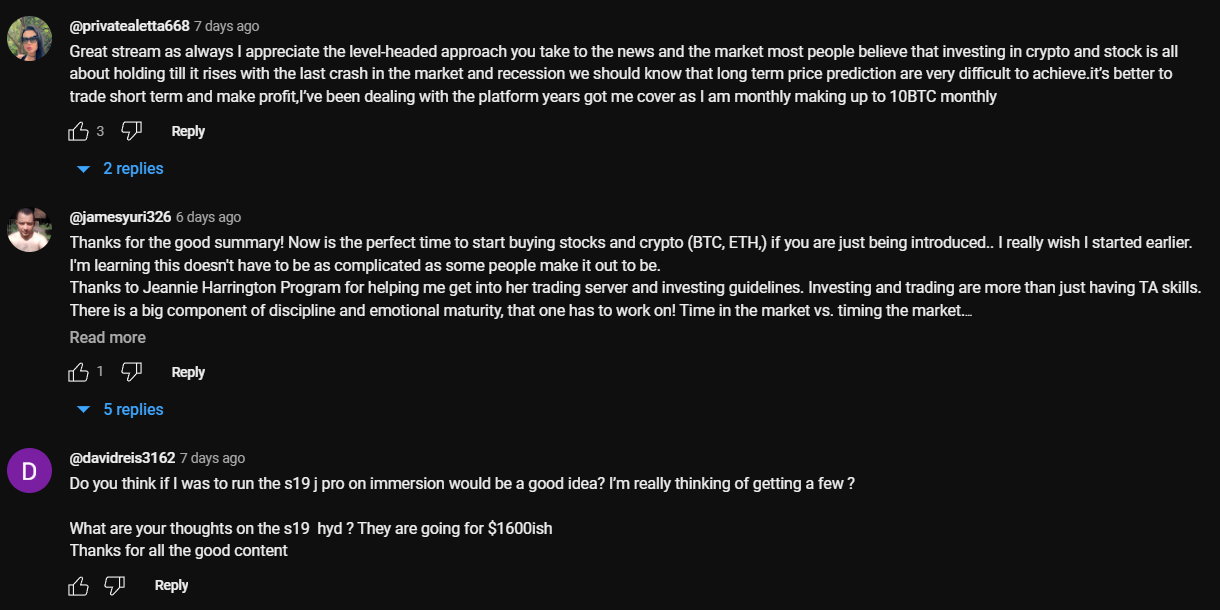
LEVEL 2
Don’t rush to conclude that you’ve discovered the perfect crypto channel just because you’ve come across some logical comments that align with the video’s topic. This may seem controversial, but it’s important to dive deeper. When you encounter a channel with logical comments, ensure that they are unique and not duplicated under the description box. Some creators are smarter than just buying comments from the first link that Google shows you when you search “buy YouTube comments”. They generate topics, provide multiple examples, or upload lists of examples, all produced by AI. You can either manually review the comments or use a script to parse all the YouTube comments into an Excel file. Then, add a formula to highlight any duplicates.

LEVEL 3
It is also a must to check the names of the profiles that leave the comments: most of the bot-generated comments are easy to track: they will all have the usernames made of random symbols and numbers, random first and last name combinations, “Habibi”, etc. No profile pictures on all comments is also a red flag.
LEVEL 4
Another important factor to consider when assessing comment authenticity is the posting date. If all the comments were posted on the same day, it’s likely that the traffic was purchased.
2. Average views number per video
This is indeed one of the key metrics to consider when selecting an influencer for collaboration, regardless of the product type. What specific factors should we focus on?
First & foremost: the views dynamics on the channel. The most desirable type of YouTube channel in terms of views is one that maintains stable viewership across all of its videos. This stability serves as proof of an active and loyal audience genuinely interested in the creator’s content, unlike channels where views vary significantly from one video to another.
Many unauthentic crypto channels not only buy YouTube comments but also invest in increasing video views to create the impression of stability. So, what exactly should we look at in terms of views? Firstly, calculate the average number of views based on the ten latest videos. Then, compare this figure to the views of the most recent videos posted within the past week. If you notice that these new videos have nearly the same number of views as those posted a month or two ago, it’s a clear red flag. Typically, a YouTube channel experiences lower views on new videos, with the number increasing organically each day as the audience engages with the content. If you see a video posted just three days ago already garnering 30k views, matching the total views of older videos, it’s a sign of fraudulent traffic purchased to create the illusion of view stability.
3. Influencer’s channel statistics
The primary statistics of interest are region and demographic split, and sometimes the device types of the viewers.
LEVEL 1
When reviewing the shared statistics, the first step is to request a video screencast instead of a simple screenshot. This is because it takes more time to organically edit a video than a screenshot, making it harder to manipulate the statistics. If the creator refuses, step two (if only screenshots are provided) is to download them and check the file’s properties on your computer. Look for details such as whether it was created with Adobe Photoshop or the color profile, typically Adobe RGB, to determine if the screenshot has been edited.
LEVEL 2
After confirming the authenticity of the stats screenshot, it’s crucial to analyze the data. For instance, if you’re examining a channel conducted in Spanish with all videos filmed in the same language, it would raise concerns to find a significant audience from countries like India or Turkey. This discrepancy, where the audience doesn’t align with regions known for speaking the language, is a red flag.
If we’re considering an English-language crypto channel, it typically suggests an international audience, as English’s global use for quality educational content on niche topics like crypto. However, certain considerations apply. For instance, if an English-speaking channel shows a significant percentage of Polish viewers (15% to 30%) without any mention of the Polish language, it could indicate fake followers and views. However, if the channel’s creator is Polish, occasionally posts videos in Polish alongside English, and receives Polish comments, it’s important not to rush to conclusions.
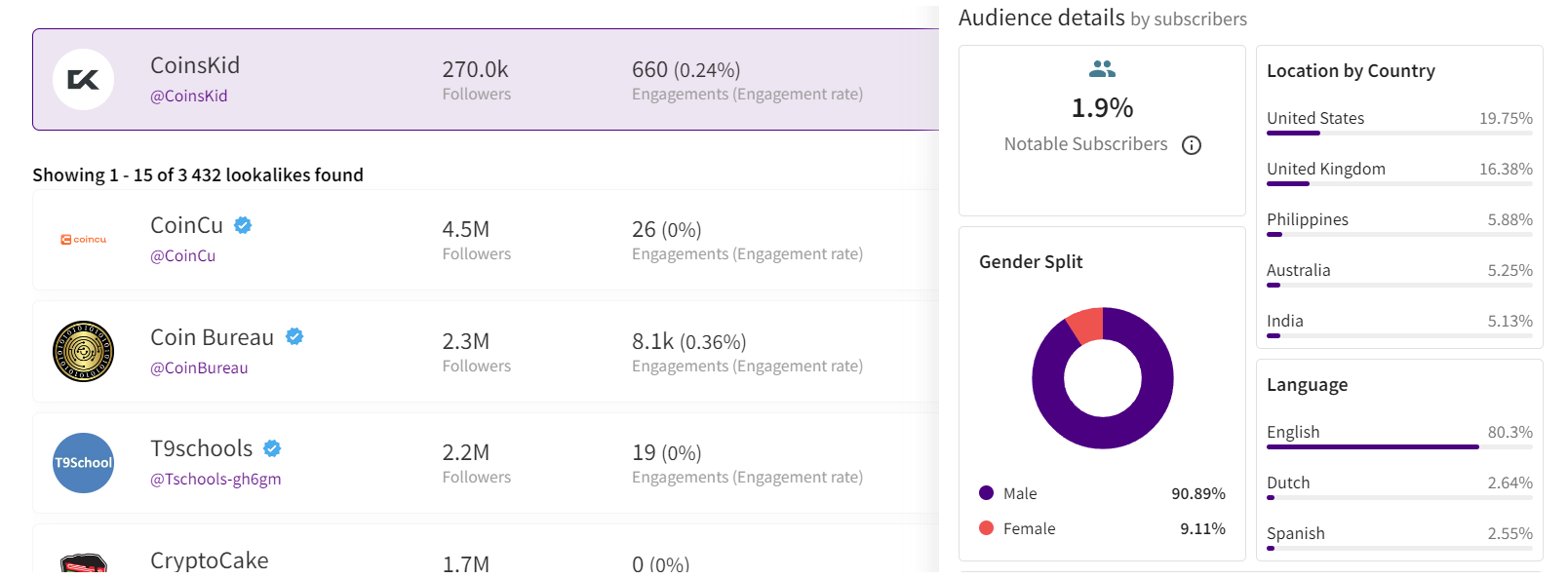 Example of statistics
Example of statistics
Wrapping up
These are the main factors to consider when selecting an influencer to promote your crypto product. Once you’ve launched the campaign, there are also some markers to show which creators did bring the authentic traffic and which used some tools to create the illusion of an active and engaged audience. While this may seem obvious, it’s still worth mentioning. After the video is posted, allow 5-7 days for it to accumulate a basic number of views, then check performance metrics such as views, clicks, click-through rate (CTR), signups, and conversion rate (CR) from clicks to signups.
If you overlooked some red flags when selecting crypto channels for your launch, you might find the following outcomes: channels with high views numbers and high CTRs, demonstrating the real interest of the audience, yet with remarkably low conversion rates. In the worst-case scenario, you might witness thousands of clicks resulting in zero to just a few signups. While this might suggest technical issues in other industries, in crypto campaigns it indicates that the creator engaged in the campaign not only bought fake views and comments but also link clicks. And this happens more often than you may realize.
Summing up, choosing the right crypto creator to promote your product is indeed a tricky job that requires a lot of resources to be put into the search process.

Author
Nadia Bubennikova, Head of agency at Famesters
Fintech
Central banks and the FinTech sector unite to change global payments space
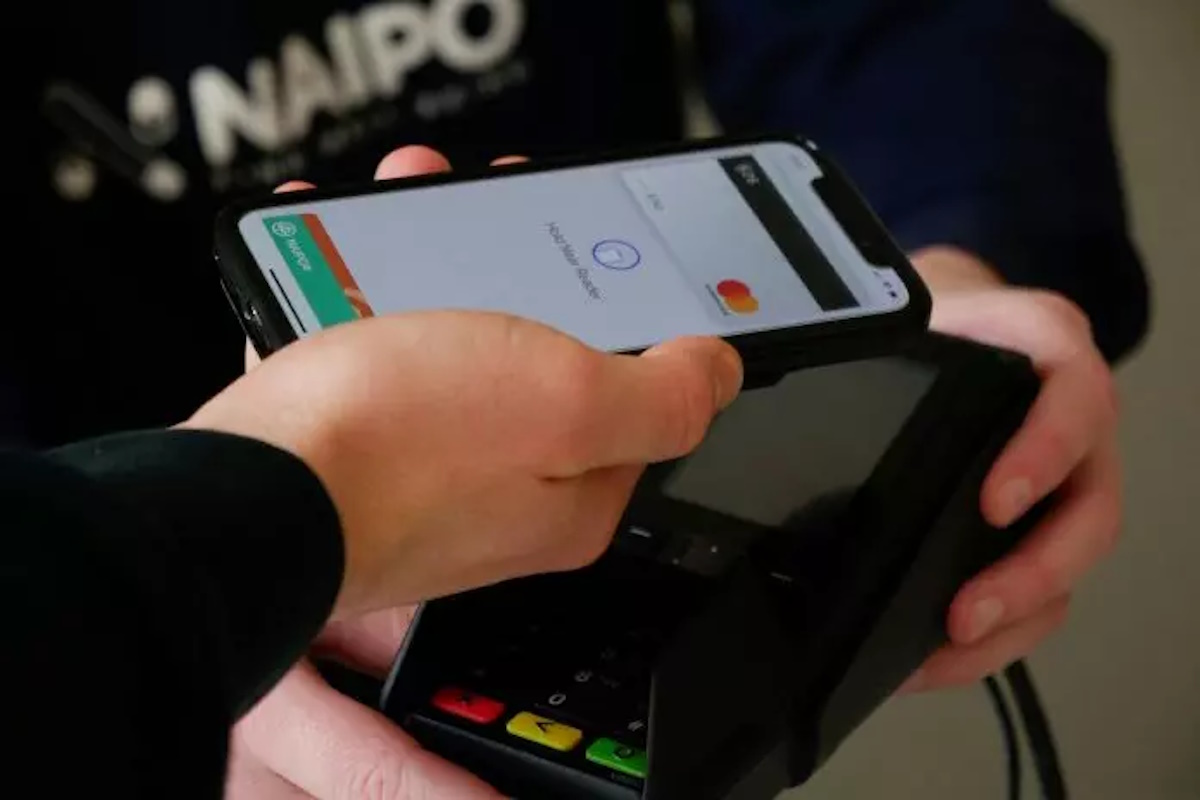
The BIS, along with seven leading central banks and a cohort of private financial firms, has embarked on an ambitious venture known as Project Agorá.
Named after the Greek word for “marketplace,” this initiative stands at the forefront of exploring the potential of tokenisation to significantly enhance the operational efficiency of the monetary system worldwide.
Central to this pioneering project are the Bank of France (on behalf of the Eurosystem), the Bank of Japan, the Bank of Korea, the Bank of Mexico, the Swiss National Bank, the Bank of England, and the Federal Reserve Bank of New York. These institutions have joined forces under the banner of Project Agorá, in partnership with an extensive assembly of private financial entities convened by the Institute of International Finance (IIF).
At the heart of Project Agorá is the pursuit of integrating tokenised commercial bank deposits with tokenised wholesale central bank money within a unified, public-private programmable financial platform. By harnessing the advanced capabilities of smart contracts and programmability, the project aspires to unlock new transactional possibilities that were previously infeasible or impractical, thereby fostering novel opportunities that could benefit businesses and consumers alike.
The collaborative effort seeks to address and surmount a variety of structural inefficiencies that currently plague cross-border payments. These challenges include disparate legal, regulatory, and technical standards; varying operating hours and time zones; and the heightened complexity associated with conducting financial integrity checks (such as anti-money laundering and customer verification procedures), which are often redundantly executed across multiple stages of a single transaction due to the involvement of several intermediaries.
As a beacon of experimental and exploratory projects, the BIS Innovation Hub is committed to delivering public goods to the global central banking community through initiatives like Project Agorá. In line with this mission, the BIS will soon issue a call for expressions of interest from private financial institutions eager to contribute to this ground-breaking project. The IIF will facilitate the involvement of private sector participants, extending an invitation to regulated financial institutions representing each of the seven aforementioned currencies to partake in this transformative endeavour.
Source: fintech.globa
The post Central banks and the FinTech sector unite to change global payments space appeared first on HIPTHER Alerts.
Fintech
TD Bank inks multi-year strategic partnership with Google Cloud
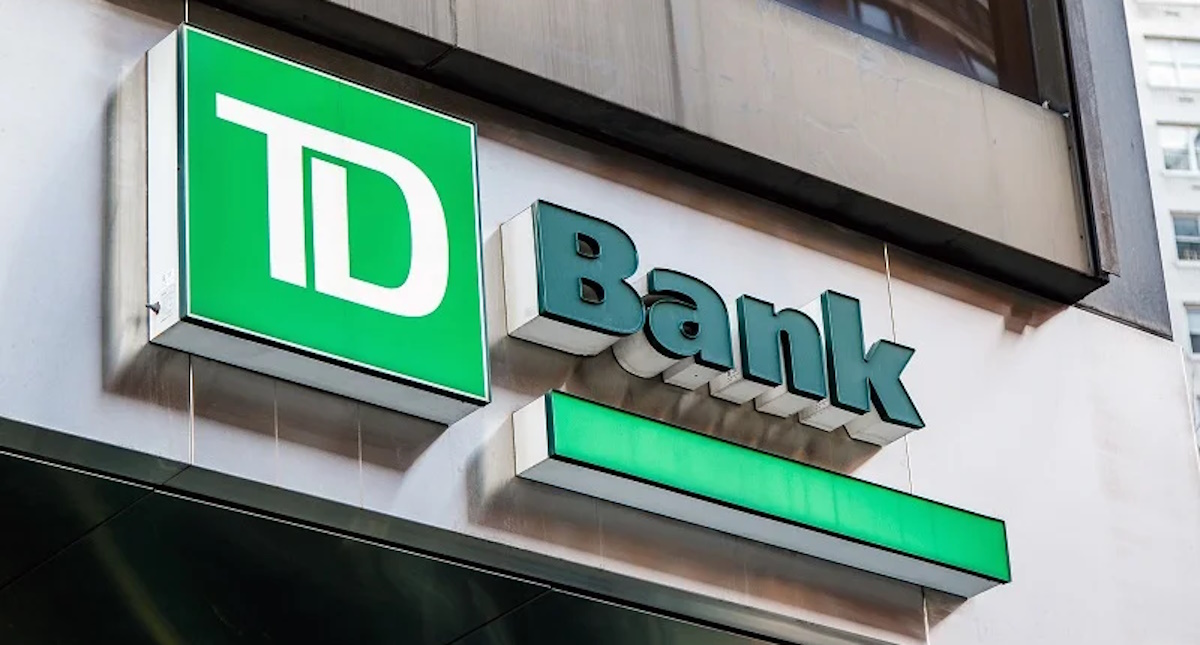
TD Bank has inked a multi-year deal with Google Cloud as it looks to streamline the development and deployment of new products and services.
The deal will see the Canadian banking group integrate the vendor’s cloud services into a wider portion of its technology solutions portfolio, a move which TD expects will enable it “to respond quickly to changing customer expectations by rolling out new features, updates, or entirely new financial products at an accelerated pace”.
This marks an expansion of the already established relationship between TD Bank and Google Cloud after the group previously adopted the vendor’s Google Kubernetes Engine (GKE) for TD Securities Automated Trading (TDSAT), the Chicago-based subsidiary of its investment banking unit, TD Securities.
TDSAT uses GKE for process automation and quantitative modelling across fixed income markets, resulting in the development of a “data-driven research platform” capable of processing large research workloads in trading.
Dan Bosman, SVP and CIO of TD Securities, claims the infrastructure has so far supported TDSAT with “compute-intensive quantitative analysis” while expanding the subsidiary’s “trading volumes and portfolio size”.
TD’s new partnership with Google Cloud will see the group attempt to replicate the same level of success across its entire portfolio.
Source: fintechfutures.com
The post TD Bank inks multi-year strategic partnership with Google Cloud appeared first on HIPTHER Alerts.
-
Latest News5 days ago
Letter from Gatemore Capital Management LLP to Elementis PLC
-
Latest News6 days ago
Shanghai Electric Releases ESG Report, Highlighting Sustainable Development Achievements in 2023
-
Latest News5 days ago
Hyosung Heavy Industries Ranked on BNEF’s Energy Storage Tier 1 List
-
Latest News5 days ago
Talino, Chemonics invest in startup Higala, the Philippines’ pioneering inclusive instant payment system
-
Latest News5 days ago
Report Finds that Huawei DigiTruck Training Helps Boost Income, Employment and Entrepreneurship
-
Latest News4 days ago
SAR1.1 Billion Riyadh Real Estate Fund Launched by Ezdihar Real Estate Development & Al-Istithmar Capital
-
Latest News6 days ago
Zilch Partners with Amazon Web Services to Drive AI Innovation
-
Latest News4 days ago
LeddarTech Reports Annual Shareholder Meeting Results

